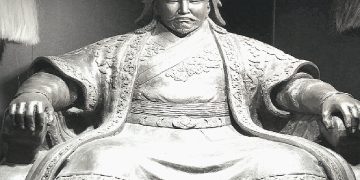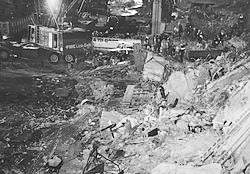A separate chapter in the history of mankind marks the wars of Ancient Greece and the Persian Empire. Outstanding land and sea battles, ingenious and bold strategies to win victories over superior enemy forces, great personalities, whose courage and intelligence will forever remain in the memory of descendants – all this looks like beautiful legends. However, this is part of the true history of our civilization, so let’s find out how events developed during the Greco-Persian Wars.
First V century. BC e. over Greece looming formidable external danger. By this time, the Persian power of the Achaemenids was in its heyday. Her ever-expanding political and military expansion directly affected the Greek world. At first, the Hellenic policies of the west coast of Asia Minor and nearby islands were conquered by the Persians. And soon the Persian fleet and ground forces made the first attempt to occupy the south of the Balkans.
In 493 BC e. troops under the command of Mardonius, the son-in-law of Tsar Darius I (521–485 BC), invaded the lands of the Thracian tribes inhabiting the coastal regions of North Aegean and simultaneously captured some of the Greek colonial cities located there. The power of the Persians over themselves was forcedly recognized by the rulers of neighboring Macedonia.
The reason for the direct invasion of mainland Greece was the help that Athens and Eretria (on the island of Euboea, located near Attica) had previously provided to the Asia Minor Hellenes, who rebelled against the despotic rule of the Achaemenids. To the ultimate demand of Darius I to obey him, the leading policies of Hellas refused emphatically. After that, the Persian expeditionary force landed on Euboea and devastated it.
Then he crossed to Attica and on the Marathon Plain, he fought with the Athenians, a much inferior militia, to whose aid only detachments from the Boeotian city of Platea managed to come. The outstanding commander Miltiad, led by the Athenian army, correctly assessing the difficult combat situation, overturned the flanks of the enemy system with a swift blow, after which the main Persian forces were defeated, which at first gained success in the center. The remains of the enemy troops fled in ships in a panic.
With joyful news of victory in Athens, a messenger was immediately sent. The warrior ran more than 42 km without respite and, having informed his fellow citizens about what had happened, fell dead. The Athenian army also hastened to their hometown. And, as it turned out, not in vain. The Persian fleet tried to take the Athenians by surprise and attack the city, which was almost deprived of defenders, but was late and met the same victorious militia under the command of Miltiades at the supposed landing point, after which it went back to Asia.
Neither Darius I, nor his son Xerxes (485-465 BC) who succeeded the throne of the Achaemenids after him could come to terms with the failure that befell the Persians in the south of the Balkans. Long and carefully prepared a new campaign on Hellas. Finally, in 480 BC. e. preparations for it are over. A huge army gathered, which included military contingents from all lands and peoples subject to Achaemenids. In addition to the Persians, there were their kindred Medes and Parthians, Bactrians and Sogdians (from Central Asia), Assyrians and Armenians, Phoenicians and Arabs, Egyptians and Ethiopians, Indians and many others. These diverse hordes crossed the strait to the European coast along two giant floating bridges. But this was possible only on the second attempt: for the first time, the storm swept the structures, and the Persian king, who personally led the campaign, became furious, ordered the executioners to whip off the watery surface of the Hellespont (Dardanelles) for her disobedience to the great lord. The mass of armed people flowed along the northern coast of the Aegean Sea through the spring and summer, until it entered the territory of Northern Greece.
By that time, a coalition of Hellenic policies opposing the Persians had formed. The supreme leadership in it was granted to Sparta, as having the most combat-ready ground army. But Athens, which possessed the most significant naval forces, also played an equally important role. The initiator of the creation of a strong Athenian fleet was the most prominent politician and commander Themistocles.
The first clash of the army of Xerxes with the Greeks occurred in Thermopylae. In this extremely defense-friendly place, where the road from North to Central Greece ran along a narrow passage between rocky mountain ranges and a swampy seashore, Hellenic warlords hoped to stop the advancement of countless enemy hordes. However, the forces sufficient to carry out this task was not prepared in time.
True, the Spartan king Leonid I, who commanded the Greek contingents concentrated here, organized the defense of Thermopyl so skillfully that the Persians, despite their continuous attacks and huge casualties, could not overcome this unexpectedly and seemingly completely insignificant obstacle. Only when one traitor from among the local residents, counting on a generous reward from Xerxes, indicated to the enemies a bypass path leading through the mountains, everything was decided by the overwhelming numerical superiority of the Persian troops.
Leonid, realizing the hopelessness of the situation, released all the allies. He himself and with him 300 selected Spartan warriors, as well as volunteers from the Boeotian city of Thespius, remained to cover their retreat, and each and everyone fell with glory in an unequal battle.
The path to Central Greece for the Persians was then opened. Boeotia’s largest policy – Thebes, who had previously leaned on the side of Xerxes, now hastened to recognize his power. All Attica was devastated, Athens lay in ruins, and their inhabitants were urgently evacuated to the nearby islands – Salamis and Aegina, as well as to the city of Tresena (in Argolis). The Spartans and their closest neighboring allies concentrated on Isthma (the Isthmus of Corinth) in order to protect the only land route leading to them on the Peloponnesian Peninsula.
The Athenians, who were in the most distressing situation, did everything so that a general battle of the All-Hellenic fleet with the Persian took place. It began in the Strait of Salamis off the coast of Attica on September 20, 480 BC. e. The lighter and more maneuverable Greek ships, among which the Athenian ones prevailed (with crews who knew the local water area abundant with pitfalls and shallows), attacked the enemy in unison and decisively, inflicting a crushing defeat on him. Themistocles played a decisive role in the preparation and successful conduct of this historic importance of the battle.
Fearing after the Salamis defeat that the Greeks would destroy the pontoon crossing he had built through the Hellespont and deprive him of the opportunity to return to Persia, Xerxes hastened to begin a retreat along an already familiar path along the western and northern shores of the Aegean Sea. In Greece, he left Mardonius with a large army, who had gone north for wintering to the allied Persians Thessaly.
In the next campaign, 479 BC e. in fact, the fate of the Hellenic policies of the south of the Balkans was decided. In the spring, the offensive of the Persians, acting together with the Thessalians and Thebans, resumed. Mardonius invaded Attica, and its population was again forced to seek refuge in Salamis. But the secondary capture of Athens was the last success of Mardonius.
In order to force the Peloponnesians to take the offensive instead of the passive defense of Isthma, the Athenians, actually paid by their own fate, the Payites and Megarians threatened their allies with the conclusion of a separate peace with the Persians. The threat worked: Sparta and other policies of the Peloponnesian Union finally sent a fairly large army under Isthm led by Pausanias, the nephew of the hero of Thermopyles – Tsar Leonid.
Mardonius then retreated to Boeotia. There, near the city of Plateaus, there was a cruel slaughter in which the commander-in-chief of the Persians died and his army was almost completely killed (its remnants rushed to the Hellespont).
Around the same time, in September 479 BC. e., there was a battle near Cape Mikale (on the Asia Minor coast, opposite the island of Samos), during which the landing, landed from Hellenic ships, destroyed the main base of the Achaemenid fleet. From this moment, a radical turning point occurs during the Greco-Persian wars: the threat to the independence of the Hellenic policies of the south of the Balkans disappears, and the question of the liberation of the Hellenic cities of Asia Minor arises on the agenda.
Sparta is now getting out of the fight. Athens takes the lead role in the anti-Persian coalition. In 478 BC e. a defensive-offensive alliance is being created, the center of which is proclaimed Delos – an island in the heart of Aegeida, revered as the sacred possession of the god Apollo. Within the framework of the new political association, the role of the hegemon is assigned to Athens.
With the formation of the Delos (First Athenian) alliance, military operations against the troops of the Achaemenid state are either dying out or intensifying again. The most significant milestones of the final stages of the Greco-Persian wars are the naval victories of the Athenians at the mouth of the Eurymedont River (in the south-west of Asia Minor) in 469 BC. e. and near the city of Salamis (in Cyprus) in 449 BC. e. Their final result was the recognition by the Achaemenids of the complete independence of all Hellenic policies of Aegean. It was recorded in 449 BC. e. Kalliev world received its name by the name of the noble Athenian ambassador who concluded it with the king of Persia.












